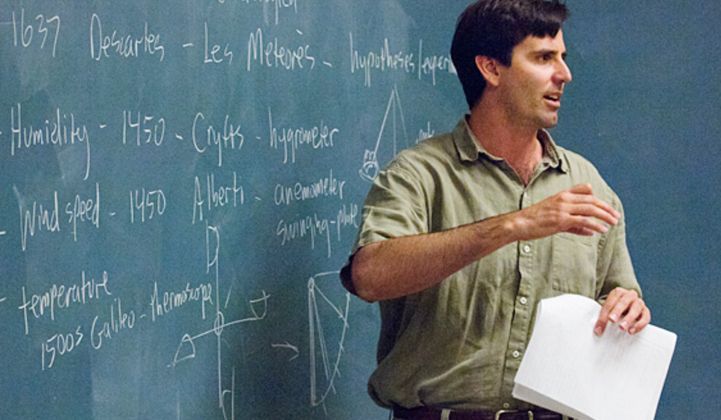
Massive changes are under way as the human species seeks solutions to climate change.
One of the key battle fronts is energy and the growing need to switch away from hydrocarbon dependence to more sustainable substitutes.
This isn’t the first energy transition, but it is the most critical. We live in what has become known as the Age of Hydrocarbon Man. The problem is, the clock is ticking.
Somehow, the use of fossil fuels has to be brought under control, but that hinges on finding scalable sustainable energy substitutes, especially for transportation, heating and cooling, synthetic petrochemicals and light.
An excellent example of the drive for change is the elimination of the internal combustion engine and basing generation wholly on renewable energy sources.
This revolution will take many decades to achieve and, over the past 20-30 years, the pace of sustainable energy research and development has been gathering pace.
Solar power has come on leaps and bounds in recent years, as has wind, hydro, geo-thermal, and storage.
Renewable energy is often hindered by the inconsistencies of power produced by wind, water and sunlight, and fluctuating demand for energy.
There is also the critical issue of cost.
New research by Mark Jacobson, a professor of civil and environmental engineering at Stanford University, and colleagues at California University, Berkeley, and Aalborg University in Denmark, believe there are three broad ways of achieving consistent power.
Mr Jacobson previously developed roadmaps for transitioning 139 countries to 100% renewable energy by 2050 with 80% of that transition completed by 2030.
His current research is about identifying the best ways to keep the grid stable.
Mr Jacobson said: “I can more confidently state that there is no technical or economic barrier to transitioning the entire world to 100% clean, renewable energy with a stable electric grid at low cost.
“This would go a long way toward eliminating global warming and the 4-7million air pollution-related deaths that occur worldwide each year, while also providing energy security.
“There are multiple solutions to the problem. This is important because the greatest barrier to the large-scale implementation of clean renewable energy is people’s perception that it’s too hard to keep the lights on with random wind and solar output.”
At the heart of this study is the need to match renewable energy supply with what demand will be in 2050.
To do this, they grouped 139 countries into 20 regions based on geographic proximity and some geopolitical concerns.
Unlike the previous 139-country study, which matched energy supply with annual-average demand, the current work matches supply and demand in 30-second increments for 5 years (2050-54) to account for the variability in wind and solar power as well as the variability in demand over hours and seasons.
For the study, the researchers relied on two computational modelling programs. The first program predicted global weather patterns for that same period.
From this, they further predicted the amount of energy that could be produced from weather-related energy sources like onshore and offshore wind turbines, solar photovoltaics on rooftops and in power plants, concentrated solar power plants and solar thermal plants over time. These types of energy sources are variable and don’t necessarily produce energy when demand is highest.
The group then combined data with a second model that incorporated energy produced by more stable sources of electricity, like geothermal power plants, tidal and wave devices, and hydroelectric power plants, and of heat, like geothermal reservoirs.
The second model also included ways of storing energy when there was excess, such as in electricity, heat, cold and hydrogen storage. Further, the model included predictions of energy demand over time.
With the two models, the group was able to predict both how much energy could be produced through more variable sources of energy, and how well other sources could balance out the fluctuating energy to meet demands.
Ultimately, the three scenarios based on the research team’s modelling data avoided blackouts at low cost in all 20 world regions for the years 2050-54:
– One scenario includes heat pumps, which are used in place of combustion-based heaters and coolers – but no hot or cold energy storage;
– The second involves adding no hydropower turbines to existing hydropower dams;
– The third has no battery storage.
The fact no blackouts occurred suggests that many possible solutions to grid stability with 100% wind, water and solar power exist.
This goes against claims that the grid cannot stay stable with such high penetrations of just renewables.
Overall, the researchers found that the cost per unit of energy in every scenario was “25% what it would be if the world continues on its current energy path”.
This is largely due to eliminating the health and climate costs of fossil fuels. Also, by reducing water vapour, the wind turbines included in the roadmaps would offset about 3% of global warming to date.
Mr Jacobson’s team found that the roadmaps roughly cut in half the amount of energy needed in the system, so consumers would actually pay less.
The vast amount of these energy savings comes from avoiding the energy needed to mine, transport and refine fossil fuels, converting from combustion to direct electricity, and using heat pumps instead of conventional heaters and air conditioners.
Berkeley’s Mark Delucchi said: “One of the biggest challenges facing energy systems based entirely on clean, zero-emission wind, water and solar power is to match supply and demand with near-perfect reliability at reasonable cost.
“Our work shows that this can be accomplished, in almost all countries of the world, with established technologies.”
But then comes the big issue of cooperation across political boundaries. This poses huge issues, not least with Brexit on the horizon.
But Mr Jacobson is an optimist: “Ideally, you’d have cooperation in deciding where you’re going to put the wind farms, where you’re going to put the solar panels, where you’re going to put the battery storage.
“The whole system is most efficient when it is planned ahead of time as opposed to done one piece at a time.”
In that regard, the EU is probably the global leader as member states increasingly cooperate under a strategy the UK is regrettably dumping through Brexit.
ENERGY STORAGE
For now, there is massive emphasis on finding energy storage solutions. Here are a few examples of the work going on at various universities around the world.
Energy storage in the form of hydrogen is one such possibility: excess electricity is fed into an electrolyser to split water into its constituent parts, oxygen and hydrogen. The hydrogen is then used in fuel cells to produce electricity when needed, releasing the stored energy back to the grid.
TURNING UP THE HEAT
In the US, at Northwestern University, Prof Sossina Haile’s team has created a new fuel cell with exceptional power densities and long-term stability.
“For years, industry has told us the ‘Holy Grail’ is getting fuel cells to work at 500-degrees Celsius and with high power density, which means a longer life and less expensive components,” Prof Haile said.
“With this research, we can now envision a path to making cost-effective fuel cells and transforming the energy landscape.”
Though research shows the potential of some ceramic fuel cells in offering sustainable and cost-effective electric power generation, their high electrolyte conductivities failed to produce enough power.
Her team has overcome this challenge by combining a high-activity cathode with a chemically stable electrolyte to produce exceptional power density and stability at intermediate temperatures.
“We solved multiple problems simultaneously by changing out the electrode, improving the electrolyte and creating good contact and communication between the two materials,” Prof Haile said.
She thinks the team has found a “a commercialisation sweet spot” that genuinely offers lower fuel cell costs and more sustainable energy.
The next challenge is to develop scalable manufacturing routes. Currently, getting excellent contact between electrode and electrolyte requires a costly processing step.
Prof Haile has a more cost-effective method in mind, which involves making the fuel cells reversible and capable of transferring electricity back into hydrogen for placement on grid backup.
SURVIVING EXTREME COLD
Staying with the temperature theme, researchers in Shanghai have developed a battery with organic compound electrodes that can function at -70C – far colder than the temperature at which lithium-ion batteries lose most of their ability to conduct and store energy.
The findings could help engineers develop technology suited to the coldest reaches of outer space – and Earth.
Most batteries perform at only 50% of their optimal level when the temperature hits -20C. At -40C, lithium-ion batteries only have about 12% of their room temperature capacity.
But Fudan University has come up with a design that can function where other batteries might fail.
When it gets cold, ester-based conventional electrolytes in lithium-ion batteries often become sluggish conductors.
The Fudan team experimented with using an ester (ethyl acetate)-based electrolyte, which has a low freezing point, enabling it to conduct a charge at extremely low temperatures.
For the electrodes, they used two organic compounds which don’t rely on intercalation – the process of continuously integrating ions into the molecular matrix, which slows down as the temperature drops.
Fudan’s Yong-yao Xia believes his team has come up with an elegant solution to boosting lithium-ion battery function.
But the Fudan battery will require more tweaking before it is ready to leave the lab.
BOOSTING REDOX PERFORMANCE
A redox flow battery uses excess solar and wind energy to charge chemicals that can be stored for use when sunshine and wind are scarce.
The chemicals can be pumped across solid electrodes, creating an electron exchange that provides power.
The key to this technology, called a redox flow battery, is finding chemicals that not only “carry” sufficient charge, but can also be stored without degrading for long periods.
Researchers at the universities of Rochester and Buffalo believe they have found a compound that could transform the energy storage landscape.
They describe modifying a metal-oxide cluster so that it is nearly twice as effective as the unmodified cluster.
The research was led by the lab of Ellen Matson at Rochester. They are working in an untapped area of molecular development.
The metal oxide cluster was first developed in the lab of German chemist Johann Spandl, and studied for its magnetic properties. Tests showed the compound could store charge in a redox flow battery, “but was not as stable as had been hoped”.
But by making “a simple molecular modification”, the team was able to expand the window during which the cluster is stable, doubling the amount of electrical energy that could be stored.
The Rochester and Buffalo teams have applied for a US National Science Foundation grant as part of an on-going collaboration to further refine the clusters for use in commercial redox flow batteries.
This could be of immense value to the EU, which is a global leader on both the wind and solar energy frontiers.
